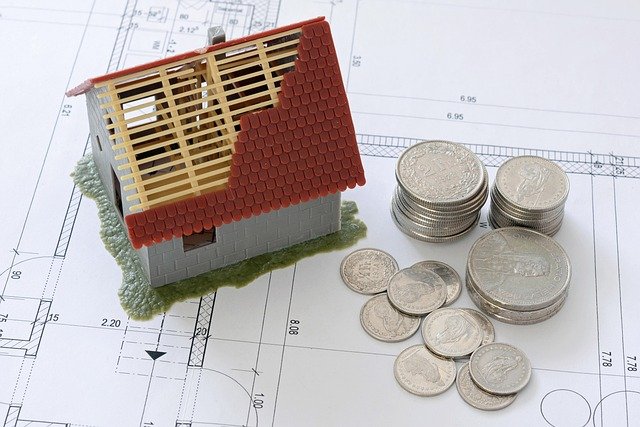How to Accurately Gauge Your Home's Market Value
Discover how to determine your property's true worth with practical advice on improvements, neighborhood influences, market conditions, and professional valuation methods. This comprehensive guide explains which home upgrades offer the best returns, how local developments shape prices, and the pros and cons of appraisals, CMA, AVMs, and income-based approaches—essential reading for sellers, refinancers, and investors.

How to Accurately Gauge Your Home’s Market Value
How Renovations Influence Property Worth
Not every upgrade will boost your home’s resale price equally. Projects that improve usability, modernize aging features, or increase energy efficiency typically add the most value. Kitchen remodels and bathroom updates remain among the top investments for recouping costs. Meanwhile, energy-saving improvements—like new windows, better insulation, or efficient HVAC systems—are increasingly attractive to buyers and can differentiate your property in a crowded market.
Before beginning work, match the scale of renovations to comparable homes in your neighborhood. Over-customizing or over-improving beyond local norms often yields diminishing returns. Prioritize fixes that resolve functional issues (roof, plumbing, electrical), then focus on cosmetic and efficiency upgrades that enhance curb appeal and day-to-day comfort.
How Your Neighborhood Affects Home Prices
Your home does not sit in isolation—nearby properties and community developments heavily shape its value. Well-kept neighboring homes, investments in public infrastructure, and new commercial or transit projects can lift prices across the area. Conversely, signs of neglect, declining local services, or unfavorable zoning changes may depress values.
Keep an eye on local planning meetings, real estate listings, and municipal announcements to anticipate shifts. Small changes—like a new park, school improvements, or a shopping center—can make a neighborhood more desirable. Similarly, proposed permits for high-density construction or changes in land use could influence supply and future demand.
Market Forces That Determine Valuations
Home prices are ultimately tied to market fundamentals. Supply and demand dynamics, prevailing interest rates, local employment trends, and broader economic indicators all factor into valuation. When inventory is tight and buyer demand strong, sellers often see higher offers. Rising interest rates, however, reduce buyers’ purchasing power and can cool price growth.
Seasonality and buyer sentiment also matter. In hot markets, properties may sell quickly and above asking price; in slower markets, buyers have more leverage. Staying informed about current trends helps determine the right timing for selling, refinancing, or investing in improvements.
Professional Methods for Establishing Value
Below is an overview of the principal valuation approaches used by real estate professionals. Each has strengths and limitations depending on your purpose—whether you need a quick estimate, a formal appraisal for a mortgage, or a figure to evaluate an income property.
| Valuation Method | Description | Best Used For |
|---|---|---|
| Comparative Market Analysis (CMA) | Assessment based on recent sales of similar nearby properties | Quick market value estimates for listing decisions |
| Professional Appraisal | In-depth inspection combined with market research and formal reporting | Mortgage applications and transactions requiring certified values |
| Automated Valuation Models (AVMs) | Algorithmic estimates using public records and market data | Fast, rough value checks and online estimates |
| Income Approach | Calculates value based on potential rental income and expenses | Investment properties and rental portfolios |
Prices, rates, or cost estimates mentioned in this article are based on the latest available information but may change over time. Independent research is advised before making financial decisions.
Comparative Market Analyses are often prepared by agents to set listing prices, but they rely on the quality of comparable sales chosen. Appraisals give the most defensible single number for lenders because of the inspector’s site visit and standardized methodology. AVMs are convenient but can be inaccurate when property details are unique or data is sparse. The income approach is essential for investors evaluating cash flow and cap rates.
Strategies to Preserve and Grow Property Value
Routine maintenance is the most reliable way to prevent depreciation. Address minor issues before they escalate: keep the roof and gutters in good condition, maintain plumbing and HVAC systems, and attend to landscaping and exterior painting. These steps help preserve both function and curb appeal.
When planning upgrades, think both short-term and long-term. Short-term enhancements—staging, fresh paint, minor kitchen or bath touch-ups—can speed a sale. Long-term investments—structural repairs, energy upgrades, or adding usable living space—may deliver stronger gains over time. Always weigh projected costs against likely returns by comparing to similar properties in your market.
Making Smart Decisions Based on Value Insights
Accurate valuation combines local knowledge, market awareness, and appropriate valuation tools. For sellers, an informed pricing strategy prevents underpricing or stagnation. For homeowners considering refinancing, knowing your home’s current market position can help negotiate better loan terms. Investors should rely on income-based analyses and market trends to evaluate potential returns.
Regularly review neighborhood sales, monitor interest rate movements, and consult professionals when a precise valuation is needed. Whether you plan to sell, refinance, or simply protect your investment, staying proactive about maintenance, tracking local developments, and choosing the right valuation method will help you make sound real estate decisions.
Understanding your home’s value is an ongoing process that blends objective data with local context. Use these principles to assess where your property stands and to make improvements or timing choices that maximize value over time.






